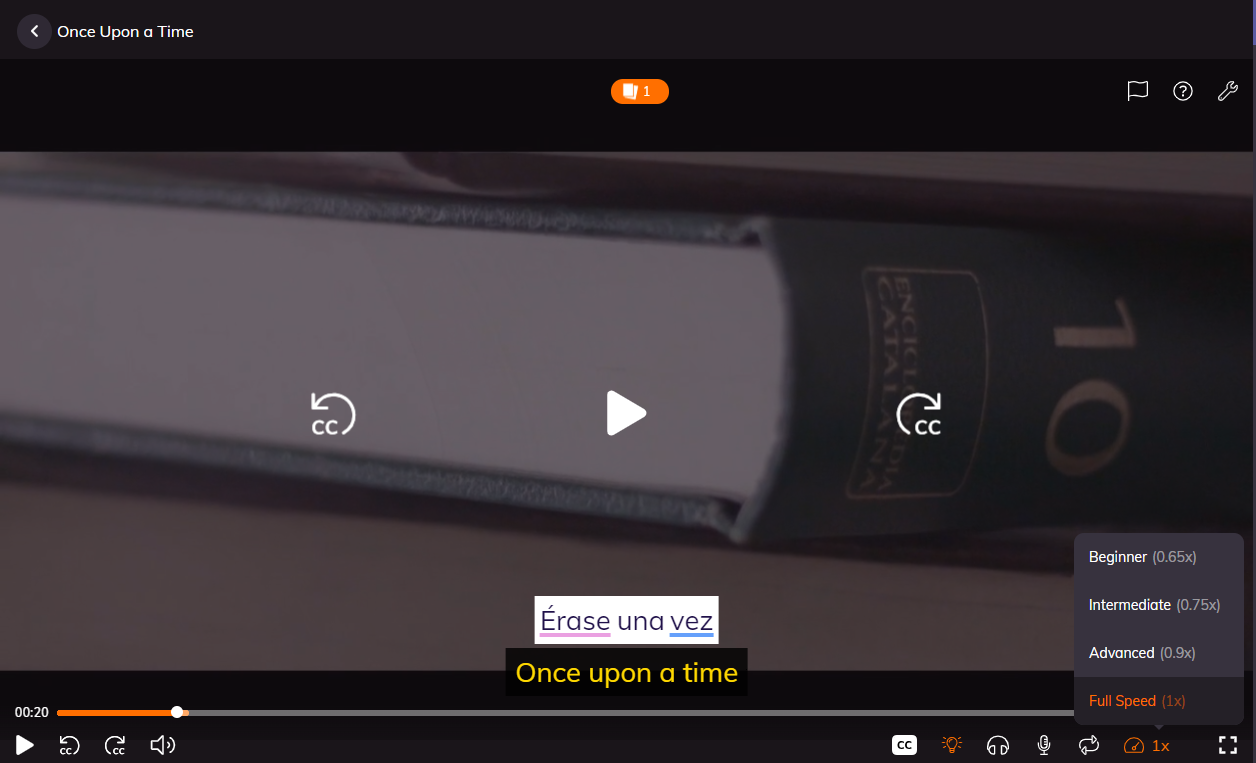Easiest Languages to Learn for English Speakers
written by: Krystof-Sandor Harfst
Table of Content
Learning a new language can feel like climbing a mountain — exciting but also challenging. But here’s the good news: not all languages are equally difficult for English speakers. Some share roots, vocabulary, or grammar structures with English, making them far easier to pick up.
Linguists and government agencies like the U.S. Foreign Service Institute (FSI) have even studied how long it takes English speakers to become proficient in different languages. While some, like Arabic or Mandarin, may take years of study, others can be learned in a matter of months.
In this article, we’ll walk through the easiest languages for English speakers to learn, backed by research and real-world learner experiences. You’ll see why certain languages feel more “natural” to English speakers, how much time they take to learn, and what makes each one appealing.
👉 Whether your goal is travel, career growth, or just the joy of connecting with new cultures, this guide will help you choose a language that won’t overwhelm you at the start.
What Makes a Language Easy to Learn?
Not all “easy” languages are equal. The ease of learning depends on a few key factors:
- Language Family & Roots
- English is a Germanic language, so other Germanic languages like Norwegian, Dutch, or Afrikaans feel familiar.
- Romance languages like Spanish, Italian, and French are also easier because English borrowed thousands of Latin and French words over history.
- Grammar & Sentence Structure
- Languages with simple verb conjugations, fewer tenses, or straightforward word order are easier to grasp.
- For example, Afrikaans has no verb conjugation at all — a huge relief compared to English!
- Pronunciation & Spelling
- If a language sounds close to how it’s written (like Spanish or Italian), learners make faster progress.
- On the other hand, French spelling can be tricky because many letters are silent.
- Learning Resources & Exposure
- A language with plenty of learning materials, apps, films, and music is easier to practice daily.
- Spanish and French, for example, have massive amounts of global content to learn from.
- FSI Time Estimates
- The Foreign Service Institute groups languages into categories based on the average hours needed for English speakers to reach working proficiency.
- Category I languages (like Spanish and Norwegian) take about 24 weeks / 600 hours, while Category IV or V languages (like Russian or Mandarin) can take 2,200+ hours.
👉 In short, the closer a language is to English in structure, vocabulary, and sound — and the more resources available — the easier it will be to learn.
Germanic Languages: Naturally Close to English
1. Norwegian
Norwegian is often ranked the easiest language for English speakers. Why?
- Shared roots: Both English and Norwegian are Germanic languages.
- Straightforward grammar: Verbs don’t change much, and word order is similar to English.
- Simple pronunciation: Words are mostly spoken the way they’re written.
- Bonus: If you learn Norwegian, you’ll also understand a lot of Swedish and Danish because the three are closely related.
The U.S. Foreign Service Institute places Norwegian in Category I — meaning it takes roughly 600 hours for an English speaker to reach proficiency. That’s about six months of serious study.
2. Dutch
Dutch is sometimes called a “bridge” between English and German.
- Vocabulary overlap: Words like “water,” “apple,” and “blue” are nearly identical in Dutch.
- Grammar: A bit more complex than Norwegian, but still much simpler than German.
- Pronunciation: This is the trickiest part — Dutch has some sounds that don’t exist in English. But overall, it’s still easier than many other languages.
FSI also lists Dutch as a Category I language, so expect a learning curve of 600–750 hours.
3. Afrikaans
Afrikaans is a descendant of Dutch, spoken mainly in South Africa and Namibia.
- Extremely simple grammar: No verb conjugation, no gendered nouns, and very few irregularities.
- Vocabulary: Still closely tied to Dutch and English.
- Pronunciation: Clear and consistent.
Many learners describe Afrikaans as one of the most straightforward languages they’ve ever studied.
👉 In short, if you’re looking for a first “easy win,” the Germanic languages — especially Norwegian or Afrikaans — are fantastic starting points.
Romance Languages: Familiar Roots for English Speakers
4. Spanish
Spanish consistently tops the list of easiest languages for English speakers.
- Phonetic spelling: Words are pronounced exactly as they’re written.
- Simple grammar: Regular verb patterns and straightforward sentence structure.
- Vocabulary overlap: Thousands of words are shared with English due to Latin roots (ex: “animal,” “hospital,” “natural”).
- Global exposure: Spanish is everywhere — from music and TV to travel and business.
📌 According to FSI, Spanish takes about 600 hours (24 weeks) to learn — making it one of the fastest for English speakers.
5. Italian
Italian is another favorite for beginners.
- Clear pronunciation: Like Spanish, Italian is written as it sounds.
- Predictable grammar: Once you learn the rules, there are few surprises.
- Cultural boost: Movies, music, and food culture make practice fun.
FSI places Italian in Category I as well — about 600 hours of study.
6. Portuguese
Portuguese, especially the Brazilian variety, is considered very learner-friendly.
- Shared with Spanish: If you know Spanish, Portuguese feels familiar (and vice versa).
- Regular grammar: Similar verb patterns to Spanish and Italian.
- Large global community: Spoken in Brazil, Portugal, and parts of Africa.
FSI estimates around 600–750 hours for proficiency.
7. French
French is one of the most influential languages in English history.
- Massive vocabulary overlap: An estimated 30–40% of English words come from French.
- Global relevance: Widely spoken on multiple continents.
- The catch: Pronunciation and silent letters can be tricky at first.
FSI places French slightly higher in difficulty than Spanish or Italian — about 750 hours.
8. Romanian
Romanian is a Romance language, but with a twist.
- Latin roots: Much of its grammar and vocabulary resemble Spanish, Italian, and French.
- Slavic influence: You’ll notice some unique elements borrowed from nearby languages.
- Phonetic writing system: Spelling is consistent with pronunciation.
Though less popular, Romanian is still in FSI’s Category I, around 600 hours of study.
👉 The Romance languages are not only accessible but also useful worldwide. Spanish and French, in particular, open doors to entire continents.
Other Accessible Languages Beyond Europe
9. Swahili
Spoken widely across East Africa, Swahili is often praised for its simplicity.
- Straightforward grammar: No verb conjugations like in English; subject and tense markers are added consistently.
- Phonetic: Words are pronounced as they’re written.
- Loanwords: Borrowed vocabulary from Arabic and English makes it easier to recognize some terms.
- FSI estimate: Around 900 hours — more than Romance/Germanic languages, but still much less than complex languages like Arabic or Chinese.
10. Indonesian (Bahasa Indonesia)
Indonesian is known as one of the easiest Asian languages for English speakers.
- Simple grammar: No plurals, verb conjugations, or complicated tenses.
- Latin alphabet: No new writing system to learn.
- Straightforward pronunciation: Very phonetic and consistent.
- FSI estimate: About 900 hours to proficiency.
11. Malay
Closely related to Indonesian, Malay is spoken in Malaysia, Brunei, and Singapore.
- Grammar and writing system: Nearly identical to Indonesian, making it equally approachable.
- FSI estimate: Around 900 hours.
12. Tagalog (Filipino)
The national language of the Philippines, Tagalog is moderately easy but has its quirks.
- Influences from English and Spanish: Many recognizable loanwords.
- Grammar: Different sentence structure from English, which adds challenge.
- FSI estimate: Around 1,100 hours — a bit longer than Indonesian or Swahili.
13. Hindi
Hindi might not be as easy as others on this list, but it’s still more accessible than many Asian languages.
- Shared vocabulary: Lots of English loanwords due to colonial history.
- Challenge: Uses the Devanagari script, which requires extra time.
- FSI estimate: Roughly 1,100 hours.
👉 These languages may take a little longer than Spanish or Norwegian, but their logical structures and consistent rules make them much easier than “difficult” languages like Mandarin, Japanese, or Arabic.
Constructed Languages: Built for Simplicity
14. Esperanto
Esperanto was invented in the late 19th century to be a universal second language.
- Ultra-regular grammar: No irregular verbs, no tricky exceptions.
- Familiar vocabulary: Many roots come from European languages (Latin, French, Germanic), so English speakers instantly recognize words.
- Scientific studies: Research shows that students who spend just one year learning Esperanto learn other foreign languages faster afterward (known as the Paderborn effect).
- FSI estimate: Not officially listed, but many learners report becoming conversational in just a few months.
15. Toki Pona
A much more modern creation, Toki Pona has only 120–137 root words.
- Minimalist vocabulary: You combine simple words to express bigger ideas.
- Philosophy-driven: Designed to make speakers think simply and clearly.
- Phonetics: Very easy sounds for English speakers — no new alphabets or tones.
While it’s not a practical global language like Spanish or French, Toki Pona is often described as “the easiest language you can actually master in weeks.”
👉 If you’re curious, constructed languages like Esperanto or Toki Pona can give you a huge confidence boost in language learning. They’re fun, simple, and teach you how languages “work” in general.
How Long Do These Languages Really Take?
The U.S. Foreign Service Institute (FSI) ranks languages by how many study hours an English speaker typically needs to reach professional working proficiency. Here’s a simplified breakdown:
| Category | Estimated Hours | Languages |
|---|---|---|
| Category I(Very Easy) | ~600 hours (24 weeks) |
|
| Category I+(Easy, but a bit more time) | ~750 hours (30 weeks) |
|
| Category II(Moderately Easy) | ~900–1,100 hours |
|
| Constructed Languages | Often <300 hours |
|
✅ Notice how the easiest ones — Spanish, Norwegian, Italian — can be learned in less than half a year of focused study. Even the “harder” easy languages like Swahili or Indonesian still take less than half the time of languages like Arabic or Chinese (which can take 2,200+ hours).
👉 So if you’re looking for a quick win, Category I languages are your best bet. If you want something unique but still manageable, Category II or even Esperanto could be a fun path.
Share this article!






